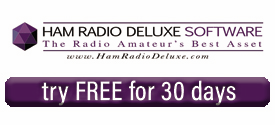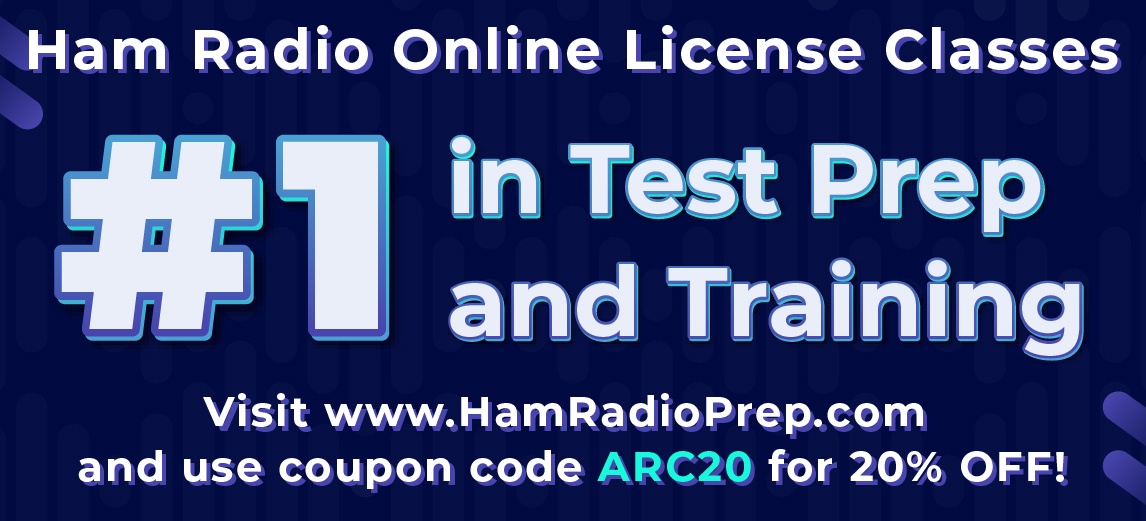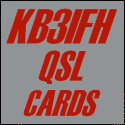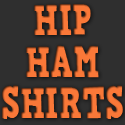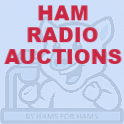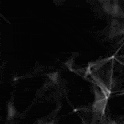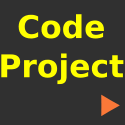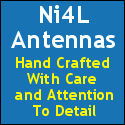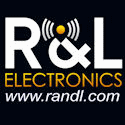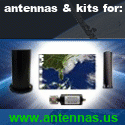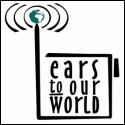Posts Tagged ‘Training’
 All New Technician License Class – Monument, CO
All New Technician License Class – Monument, CO
 The Technician license is your gateway to the worldwide excitement of Amateur Radio, and the very best emergency communications capability available! This is the entry-level class for people who do not currently have an amateur (ham) radio license.
The Technician license is your gateway to the worldwide excitement of Amateur Radio, and the very best emergency communications capability available! This is the entry-level class for people who do not currently have an amateur (ham) radio license.
The Tri-Lakes Monument Radio Association (Monument, CO) is introducing a new approach to teaching the Technician Level ham radio license class. We have completely overhauled the delivery format of our Tech Class to make good use of both in-person and online training methods. The biggest change is that most of the core material will be delivered to the student via bite-sized online videos, ebook sections, and additional content from Ham Radio School. This dramatically increases the flexibility on how and when the student views this material, eliminating long, all-day classroom sessions. We will have three live Zoom sessions along the way to review the material and answer any questions you might have.
We understand that in-person training is extremely valuable for certain types of activities. Accordingly, we will have an in-person kickoff session (Feb 17) for the instructors to meet the students and show them how ham radio equipment is used. The licensing exam session (Mar 9) is another in-person event. Finally, after you receive your new license, we will have an in-person Get On The Air event (Mar 16) where you will make your first radio contact. To help guide you through this process, an experienced radio ham will connect with you, monitor your progress, and help you through the class.
The cost of the class is $50 ($40 for anyone under 18 years old), which includes everything you need for the class. A non-expiring subscription to the Ham Radio School Technician resources is included. We used to require you to have a printed copy of the Ham Radio School Technician book, but that same material will be delivered to you online as an ebook. Proceeds from this class go to support the Tri-Lakes Monument Radio Association, a non-profit organization.
You still need to pay a $35 license fee directly to the FCC after passing the license exam.
More details are in the attached flyer.
To register, go here:
https://w0tlm.com/radio-classes/tech-registration
You can probably tell I am excited about the new format for this class. It will make it easier on the instructors to deliver the material AND easier for the students to learn it. If you have questions, let me know!
Bob K0NR
[email protected]
The post All New Technician License Class – Monument, CO appeared first on The KØNR Radio Site.
 Extra License Class – Palmer Lake, CO
Extra License Class – Palmer Lake, CO
Ham Radio Extra License Class
Palmer Lake, Colorado
Sat Oct 21 through Sat Nov 4, 2023
- Two all-day in-person sessions Oct 21 and Nov 4 (8 AM to 5 PM)
Palmer Lake Town Hall, 42 Valley Crescent Street, Palmer Lake, CO, 80133 - Additional 8 hours of Zoom & video sessions (scheduling TBD)
- Students are expected to attend all scheduled sessions.
The Extra License is the top amateur license, providing full access to the FCC Amateur Radio Service band allocations.
- Upgrade from General to Extra Class radio privileges
- Pass your FCC Extra Class amateur license exam
- Live equipment demonstrations and activities
- Expand your HF ops on 15-, 20-, 40-, & 80-meter bands
- Gain a deeper understanding of radio electronics and theory
- Take the next step with antennas, amplifiers, digital modes
Registration fee: $40
In addition, students must have the required study guide:
Ham Radio School Extra License Course
First Edition, effective 2020 – 2024, $29.95
A current FCC General License is required for registration.
For more information and to register, go here:
https://w0tlm.com/radio-classes/extra-registration
Questions, email: [email protected]
Sponsored by the
Tri-Lakes Monument Radio Association
www.w0tlm.com
The post Extra License Class – Palmer Lake, CO appeared first on The KØNR Radio Site.
 Announcing: Extra Class License book
Announcing: Extra Class License book
 Followers of this blog know that I like to write stuff. My work shows up in many different venues, with a variety of purposes, but mostly I write with the goal of explaining technical topics to help people learn. My most recent project is co-authoring an Extra Class license book with Stu/W0STU for Ham Radio School.
Followers of this blog know that I like to write stuff. My work shows up in many different venues, with a variety of purposes, but mostly I write with the goal of explaining technical topics to help people learn. My most recent project is co-authoring an Extra Class license book with Stu/W0STU for Ham Radio School.
Building on the successful formula of the popular Technician & General License Courses from Ham Radio School, we’ve crafted an Extra License Course that…
Prepares you to ace the exam
Imparts valuable practical knowledge
Is easy to digest
Serves as a handy future reference
It’s everything you expect from a Ham Radio School course:
Explains all 621 Extra exam question items.
Over 230 professionally crafted instructional illustrations.
Bite-sized topical sections in conceptual building block sequence.
Free online quizzes, section-by-section, and comprehensive practice exams.
Tons of free online learning supplements, section by section, including video, audio, articles and links.
Our goal with the book is to have you learn the exam material, not just memorize questions.
73 Bob K0NR
The post Announcing: Extra Class License book appeared first on The KØNR Radio Site.
 What Do VHF and UHF Mean?
What Do VHF and UHF Mean?
Recently, I engaged in a discussion about a UHF (Ultra High Frequency) radio. It seems a ham was complaining that someone had advertised an 800 MHz radio, describing it as “UHF”. His issue was that in land mobile radio, UHF is commonly used to refer to radios in the 380 to 500-ish MHz range. I disagreed with him, saying that 800 MHz is in the UHF range I was using the ITU definition of UHF, which is any frequency between 300 MHz to 3 GHz. The disagreement was not a big deal but it did cause some confusion. (Of course, I was right and he was wrong, most definitely.)
This got me thinking about how we toss around these terms quite loosely, even though they have precise definitions. Let’s start with the basics, the ITU definitions of radio spectrum.
| LF | Low Frequency | 30 to 300 kHz |
| MF | Medium Frequency | 300 kHz to 3 MHz |
| HF | High Frequency | 3 MHz to 30 MHz |
| VHF | Very High Frequency | 30 MHz to 300 MHz |
| UHF | Ultra High Frequency | 300 MHz to 3 GHz |
| SHF | Super High Frequency | 3 GHz to 30 GHz |
You can see that the basic scheme divides up the spectrum into decades (factors of ten), aligned with frequencies that start with 3 (e.g., 3 MHz, 30 MHz, 300 MHz). If we map the amateur bands onto this system, we see that the bands from 80m (3.5 to 4.0 MHz) through 10m (28-29.7 MHz) fall into the HF range, as expected. Note that 10m almost qualifies as a VHF band, coming in just shy of the 30 MHz limit. That band does have some VHF tendencies. The 160m band (1.8 to 2.0 MHz) actually falls into the MF range even though many of us just think of it as HF.
Let’s take a look at how the US amateur bands line up with this scheme.

There are three VHF bands: 6m (50 to 54 MHz), 2m (144 to 148 MHz) and 1.25m (222 to 225 MHz). The UHF range includes the 70 cm (420 to 450 MHz), 33 cm (902 to 928 MHz), 23 cm (1240 to 1300 MHz), and 13 cm (2300 to 2450 MHz) bands.
The two most commonly used bands in the VHF/UHF region are 2m and 70cm. These bands are home for many FM repeaters, FM simplex, SSB simplex, and plenty of other modes. Common dualband transceivers, both mobile and handheld, operate on the 2m and 70cm bands. These radios are so common that we often refer to them as VHF/UHF dualband radios. Accordingly, you will often hear hams refer to the 2m band as simply VHF and the 70cm band as UHF, as if VHF means 2 meters and UHF means 70 cm. I know I’ve been guilty of saying “let’s switch over to VHF” when I really mean “let’s go to the 2m band.” The 2m band is certainly VHF but VHF does not always mean 2 meters. Similarly, we might say “I’ll call you on the UHF repeater” when it would be more precise to say “I’ll call you on 440 MHz.”
Many times being loose with terminology doesn’t matter but there are times when using the right words can make a difference. Think about this the next time you are referring to a particular frequency band.
73 Bob K0NR
The post What Do VHF and UHF Mean? appeared first on The KØNR Radio Site.
 Ham Radio School Does Video!
Ham Radio School Does Video!
 I’ve been teaching ham radio license classes with our local radio club for many years now using the Ham Radio School books, written by my friend Stu Turner (W0STU). We use a fast-paced two-day format that strives for efficient learning…go fast but have the students actually learn something. Towards that end, we were frustrated with the existing license books and online material available: they either just “taught the exam” or overwhelmed the student with too much detail. Stu ended up writing the Technician license book that solves this problem. Is easy to read and covers just enough of the material so that the student actually learns about ham radio.
I’ve been teaching ham radio license classes with our local radio club for many years now using the Ham Radio School books, written by my friend Stu Turner (W0STU). We use a fast-paced two-day format that strives for efficient learning…go fast but have the students actually learn something. Towards that end, we were frustrated with the existing license books and online material available: they either just “taught the exam” or overwhelmed the student with too much detail. Stu ended up writing the Technician license book that solves this problem. Is easy to read and covers just enough of the material so that the student actually learns about ham radio.
Now Ham Radio School has moved to the next level, offering an online Technician class based on high-quality video training. Stu is an excellent instructor and very competent at explaining the key concepts, so the videos are easy to watch and digest. Different people have different learning styles, so the Ham Radio School learning system includes the highly successful Technician book, online videos, and an extensive set of support materials on the hamradioschool.com website. Of course, these different elements are integrated together and present the ham radio concepts in a consistent manner.

Stu has developed a video production system that really works, using professional computer graphics tools. The videos are easy to watch, proceeding at a decent pace. If you miss something, you can always back up the presentation and look at it again.

You can try out the first four Technician lessons at no charge and then decide if this approach works for you. The entire video course is available for an introductory price of $15.95. (The Ham Radio School book is available for $19.95). Depending on your learning style, you might just want to read the book, view the video class, or do both. Your choice.
73 Bob K0NR
Disclosure: I have contributed content to the Ham Radio School website, provided technical consulting on the General License class book, and have received compensation for this work.
The post Ham Radio School Does Video! appeared first on The KØNR Radio Site.
 Technician License Class – Black Forest, Colorado
Technician License Class – Black Forest, Colorado
 The Technician license is your gateway to the worldwide excitement of Amateur Radio, and the very best emergency communications capability available!
The Technician license is your gateway to the worldwide excitement of Amateur Radio, and the very best emergency communications capability available!
We are once again offering our highly-successful Technician License Class in Black Forest, Colorado.
- Earn your ham radio Technician class radio privileges
- Pass your FCC amateur radio license exam right in class on the last day
- Multiple-choice exam, No Morse Code Required
- Learn to operate on the ham bands, 10 meters and higher
- Learn to use the many VHF/UHF FM repeaters in Colorado
- Find out how to participate in emergency communications
Schedule: in-person plus online
Sat Oct 15 9:00 am – 3:30 pm In Person
Sun Oct 16 4:00 – 5:30 pm Online (Zoom)
Tue Oct 18 6:00 – 8:00 pm Online (Zoom)
Sat Oct 22 9:00 am – 3:00pm In Person (includes Exam Session)
In-person sessions are held at the Black Forest Fire & Rescue Station 1, 11445 Teachout Road, Colorado Springs, CO 80908
Registration fee: $30 adults, $20 under age 18
Advance registration is required.
Note that the FCC now charges a $35 license fee, payable after you pass the license exam.
Students must have the required study guide: Ham Radio School Technician License Course, 2022 – 2026
Register
To register for the class, go to:
http://w0tlm.com/radio-classes/tech-registration
Any questions, contact Bob Witte KØNR [email protected]
Sponsored by the Tri-Lakes Monument Radio Association www.w0tlm.com
For more information on amateur (ham) radio visit www.arrl.org
The post Technician License Class – Black Forest, Colorado appeared first on The KØNR Radio Site.
 Get Your Ham Radio License, Colorado
Get Your Ham Radio License, Colorado
The Technician license is your gateway to the world-wide excitement of Amateur Radio, and the very best emergency communications capability available!
We are once again offering our highly-successful Technician License Class in Monument, Colorado.
- Earn your ham radio Technician class radio privileges

- Pass your FCC amateur radio license exam right in class on the last day
- Multiple-choice exam, No Morse Code Required
- Learn to operate on the ham bands, 10 meters and higher
- Learn to use the many VHF/UHF FM repeaters in Colorado
- Find out how to participate in emergency communications
Schedule
Online + In-Person in Monument, Colorado
Sat April 2 1 – 5 PM In Person
Sun April 3 1 – 4 PM Online
Tue April 5 6 – 8:30 PM Online
Sat April 9 1 – 5 PM In Person (includes Exam)
Online sessions will be held using Zoom.
The in-person sessions will be at Woodmoor Community Center (Woodmoor Barn) in Monument, CO.
Registration fee: $30 adults, $20 under age 18
Advance registration is required.
 Students must have the required study guide:
Students must have the required study guide:
HamRadioSchool.com Technician License Course
Third Edition, 2018 – 2022
Register
To register for the class, go to:
http://w0tlm.com/radio-classes/tech-registration
Any questions, contact Bob Witte KØNR [email protected]
Sponsored by the Tri-Lakes Monument Radio Association www.w0tlm.com
For more information on amateur (ham) radio visit www.arrl.org
The post Get Your Ham Radio License, Colorado appeared first on The KØNR Radio Site.
